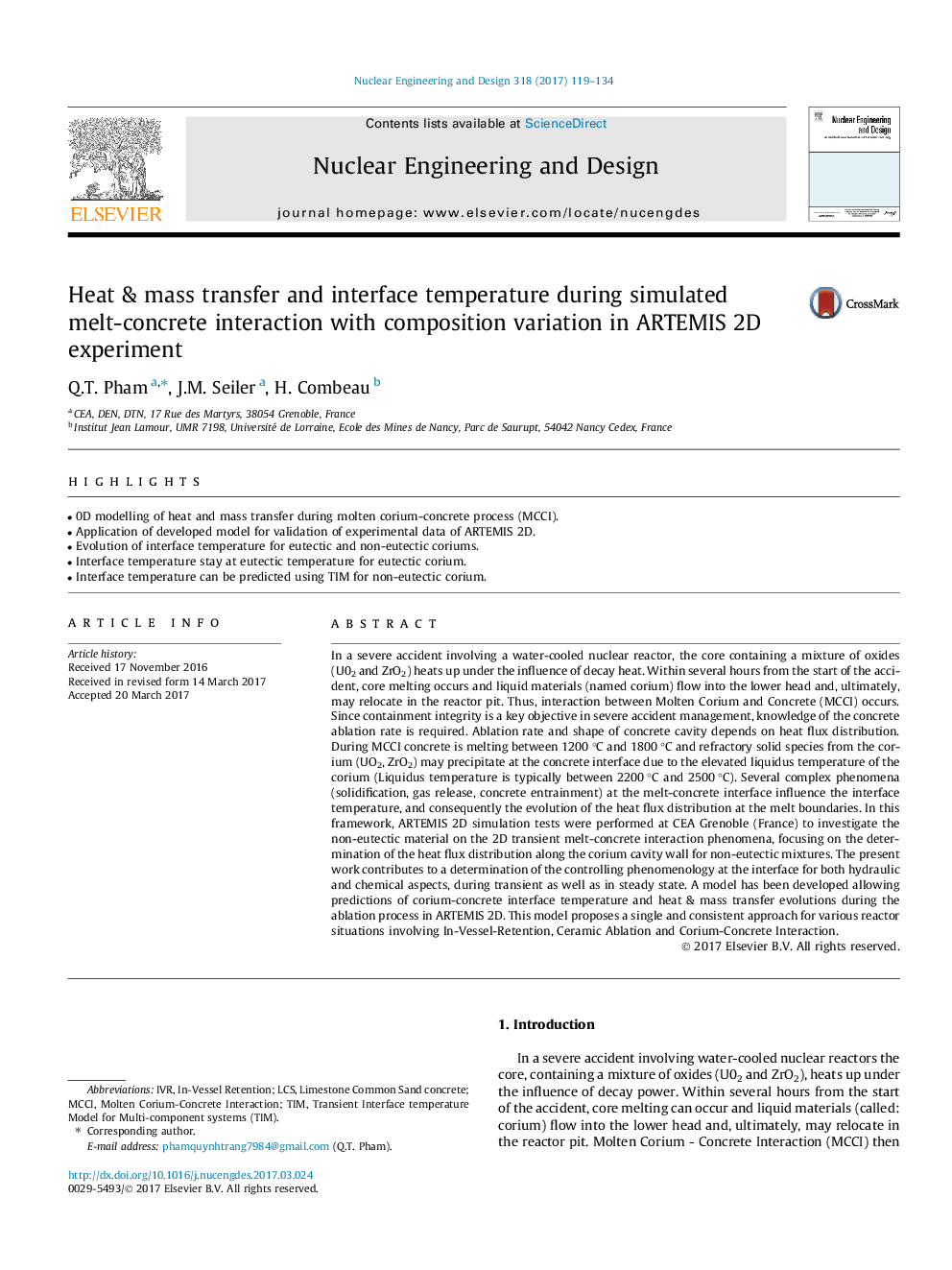| کد مقاله | کد نشریه | سال انتشار | مقاله انگلیسی | نسخه تمام متن |
|---|---|---|---|---|
| 4925496 | 1431403 | 2017 | 16 صفحه PDF | دانلود رایگان |
عنوان انگلیسی مقاله ISI
Heat & mass transfer and interface temperature during simulated melt-concrete interaction with composition variation in ARTEMIS 2D experiment
دانلود مقاله + سفارش ترجمه
دانلود مقاله ISI انگلیسی
رایگان برای ایرانیان
موضوعات مرتبط
مهندسی و علوم پایه
مهندسی انرژی
مهندسی انرژی و فناوری های برق
پیش نمایش صفحه اول مقاله

چکیده انگلیسی
In a severe accident involving a water-cooled nuclear reactor, the core containing a mixture of oxides (U02 and ZrO2) heats up under the influence of decay heat. Within several hours from the start of the accident, core melting occurs and liquid materials (named corium) flow into the lower head and, ultimately, may relocate in the reactor pit. Thus, interaction between Molten Corium and Concrete (MCCI) occurs. Since containment integrity is a key objective in severe accident management, knowledge of the concrete ablation rate is required. Ablation rate and shape of concrete cavity depends on heat flux distribution. During MCCI concrete is melting between 1200 °C and 1800 °C and refractory solid species from the corium (UO2, ZrO2) may precipitate at the concrete interface due to the elevated liquidus temperature of the corium (Liquidus temperature is typically between 2200 °C and 2500 °C). Several complex phenomena (solidification, gas release, concrete entrainment) at the melt-concrete interface influence the interface temperature, and consequently the evolution of the heat flux distribution at the melt boundaries. In this framework, ARTEMIS 2D simulation tests were performed at CEA Grenoble (France) to investigate the non-eutectic material on the 2D transient melt-concrete interaction phenomena, focusing on the determination of the heat flux distribution along the corium cavity wall for non-eutectic mixtures. The present work contributes to a determination of the controlling phenomenology at the interface for both hydraulic and chemical aspects, during transient as well as in steady state. A model has been developed allowing predictions of corium-concrete interface temperature and heat & mass transfer evolutions during the ablation process in ARTEMIS 2D. This model proposes a single and consistent approach for various reactor situations involving In-Vessel-Retention, Ceramic Ablation and Corium-Concrete Interaction.
ناشر
Database: Elsevier - ScienceDirect (ساینس دایرکت)
Journal: Nuclear Engineering and Design - Volume 318, July 2017, Pages 119-134
Journal: Nuclear Engineering and Design - Volume 318, July 2017, Pages 119-134
نویسندگان
Q.T. Pham, J.M. Seiler, H. Combeau,